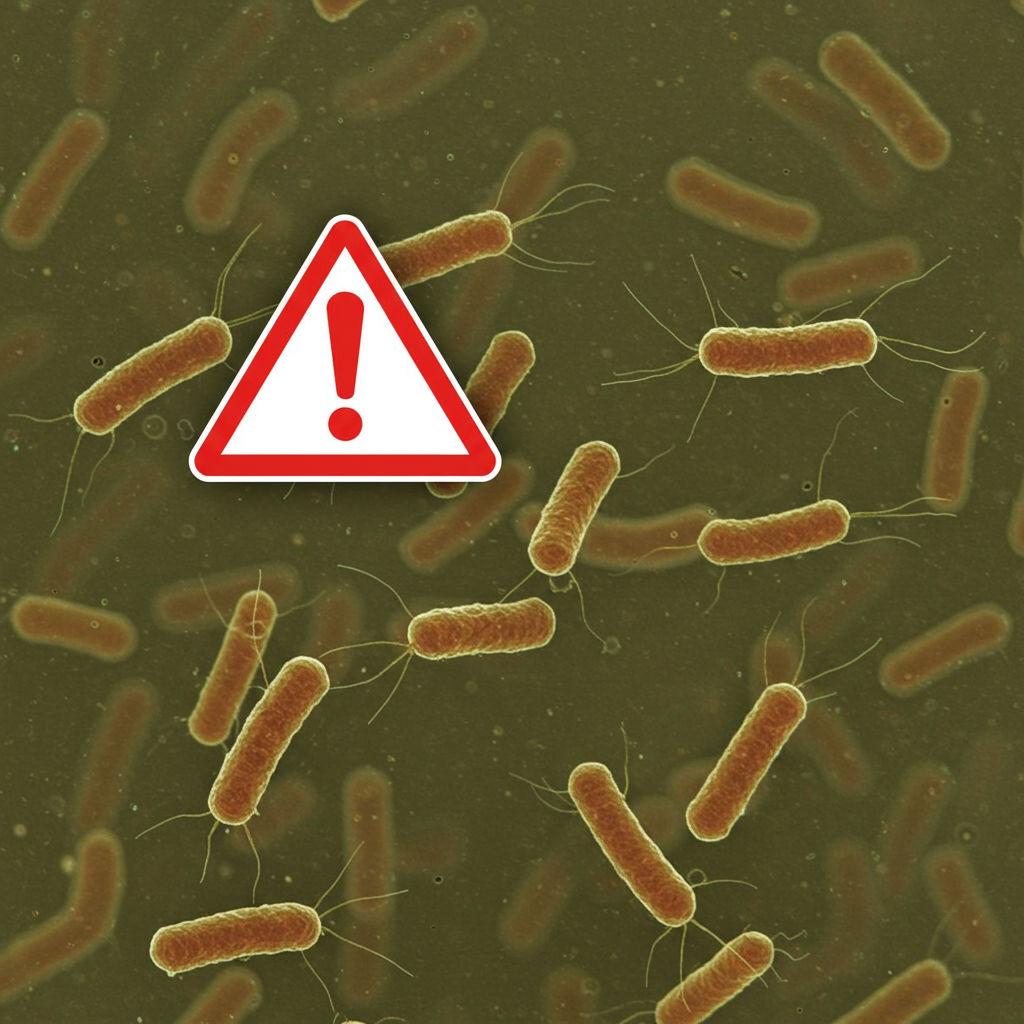An urgent public health warning has been issued as Louisiana grapples with a concerning rise in Vibrio vulnificus infections, often tragically dubbed “flesh-eating bacteria.” State health officials recently confirmed three new cases, bringing Louisiana’s total hospitalizations to 20 this year. Four individuals have already succumbed to this aggressive infection, underscoring the critical need for heightened awareness and preventative action. This dangerous bacteria, thriving in warm coastal waters, poses a significant threat, especially during warmer months. Understanding the risks and implementing simple safety measures can protect you and your loved ones from its potentially devastating impact.
Understanding Vibrio Vulnificus: A Serious Threat
Vibrio vulnificus is a naturally occurring bacterium found in warm, salty, and brackish waters (where freshwater mixes with saltwater). While a variety of Vibrio species exist, Vibrio vulnificus is particularly dangerous. It is known for causing severe, life-threatening infections, earning its grim nickname “flesh-eating bacteria” due to its ability to rapidly destroy surrounding muscle tissue and skin, a condition known as necrotizing fasciitis.
These infections are considered rare, with an average of 150 to 200 cases reported annually across the U.S. However, they are exceptionally severe. Approximately one in five people infected with Vibrio vulnificus die, sometimes within just a day or two of symptom onset. Many survivors require intensive care, extensive surgical tissue removal, or even limb amputation.
Louisiana’s Alarming Surge and Broader Gulf Coast Concerns
Louisiana has experienced a notable surge in Vibrio vulnificus cases this year. The 17 confirmed hospitalizations and four fatalities in the state represent a significant increase compared to the average of seven cases and one death annually over the past decade. This spike is not isolated to Louisiana. Health officials across the U U.S. Southeast are reporting similar trends. Florida has confirmed 16 cases and five deaths, North Carolina seven cases, and Mississippi three. The Centers for Disease Control and Prevention (CDC) estimates about 60 Vibrio vulnificus cases have occurred across 11 states this year.
Theresa Sokol from the Louisiana Department of Health (LDH) highlights a challenge in issuing specific warnings. Patients often cannot pinpoint the exact waterway or location of exposure, making it difficult to name specific high-risk areas. However, the consistent link remains exposure to coastal waters or consumption of contaminated seafood.
How Infections Spread: Water Exposure and Seafood Consumption
Vibrio vulnificus primarily infects humans through two main pathways:
1. Exposure Through Open Wounds
The most common route of infection (accounting for about 90% of cases) is when an open wound, even a minor cut, scrape, recent surgical incision, piercing, or tattoo, comes into contact with contaminated salt or brackish water. This can happen during activities like swimming, fishing, crabbing, or simply walking in coastal waters. The bacteria can also enter wounds when handling raw seafood or its drippings. Peggy Parker, a Vibrio survivor from Mississippi, contracted the infection after walking in the Gulf. Her harrowing experience, including an extreme fever, leg blisters, and a coma, underscores the bacteria’s rapid and severe progression. The recent death of Basil Kennedy from Bay St. Louis, who died after scraping his leg on a boat trailer, further illustrates this deadly risk.
2. Consumption of Contaminated Seafood
The second pathway is through ingesting raw or undercooked seafood, particularly oysters. Oysters are filter feeders and can concentrate the bacteria from the surrounding water. While less common than wound-related infections, foodborne Vibrio vulnificus can also lead to severe illness and death. It is crucial to ensure all seafood is thoroughly cooked.
Who Faces the Highest Risk?
While anyone can contract Vibrio vulnificus through a wound, certain individuals are at a significantly higher risk for severe infections and complications. These include:
People with liver disease (e.g., cirrhosis)
Individuals with weakened immune systems
Those with chronic health conditions like diabetes or kidney disease
People with cancer
Individuals over the age of 65
Dr. Katherine Baumgarten, Medical Director of infection prevention for Ochsner Health, emphasizes that even those previously infected can be re-infected. She advises caution for all, especially those in high-risk groups, when engaging with coastal waters.
Recognizing Symptoms and Seeking Immediate Care
Symptoms of a Vibrio vulnificus infection can progress rapidly and vary depending on the mode of transmission. Prompt medical attention is critical for survival and preventing severe outcomes.
Wound Infection Symptoms: If the bacteria enters through broken skin, symptoms include fever, increasing redness, swelling, warmth, pain, and pus or discharge from the wound. Distinctive signs can include rapid discoloration or the appearance of “bull’s-eye” blisters. This form can lead to necrotizing fasciitis.
Gastrointestinal Symptoms: Ingesting the bacteria can cause food poisoning symptoms such as watery diarrhea, stomach cramps, nausea, vomiting, fever, and chills. While mild cases may resolve on their own, they can quickly escalate to a deadly systemic infection.
Bloodstream Infection Symptoms: If the bacteria enters the bloodstream (sepsis), symptoms become life-threatening. These include high fever, chills, dangerously low blood pressure, and blistering skin lesions across the body. Individuals may also experience confusion or a rapid heart rate.
Dr. Norman Beatty, an infectious disease doctor at University of Florida Health, stresses that delaying healthcare is the primary reason for severe outcomes. Early presentation and prompt antibiotic treatment can significantly improve recovery and prevent serious complications. If you suspect an infection after water exposure or consuming seafood, seek emergency medical evaluation immediately.
Why Are Cases Rising? Expert Insights
The unusual surge in Vibrio vulnificus cases has prompted researchers and health officials to investigate contributing factors. Experts suggest a combination of environmental and human behavioral elements:
Rising Ocean Temperatures: Vibrio bacteria thrive in warm water, typically between May and October. As global ocean temperatures warm, the bacteria can survive longer and expand their habitable zones. The CDC notes that the geographic range of Vibrio infections has increased northward by approximately 48 kilometers (about 30 miles) per year. This explains why cases are increasingly found in states farther north like New York, Connecticut, and Maryland.
Extreme Weather Events: Hurricane activity, coastal floods, and storm surges can force coastal waters inland, creating new areas of exposure. Florida experienced an unusual increase in cases last year, potentially exacerbated by an “extremely active” hurricane season. With the National Oceanic and Atmospheric Administration (NOAA) predicting an “above normal” hurricane season for the current year, concerns are heightened.
Increased Water Activities and Raw Seafood Consumption: More people engaging in coastal water activities and consuming raw shellfish contribute to a higher risk of exposure.
Environmental Indicators: Antarpreet Jutla, an engineering professor at the University of Florida, is researching high concentrations of plankton and chlorophyll in Florida’s panhandle, which are indicators for Vibrio bacteria.
Dr. Salvador Almagro-Moreno, a researcher at St. Jude’s Children’s Research Hospital, notes a steady increase in Vibrio vulnificus infections over the last six to seven years, observing a 200% increase in Louisiana over the past two years alone.
Essential Prevention Strategies
The Louisiana Department of Health (LDH) and the CDC offer critical safety tips to minimize your risk of Vibrio vulnificus infection:
Avoid water contact with wounds: If you have any cuts, sores, or open wounds (including recent tattoos or piercings), avoid entering salt or brackish water. This is the single most important preventative measure for wound infections.
Wash wounds immediately: If a wound does get wet, wash it right away and thoroughly with soap and clean water.
Cover wounds: If contact with coastal water or raw seafood is unavoidable, cover any open wounds with a waterproof bandage.
Wear protective gear: When handling raw shellfish, wear protective gloves or clothing to prevent contact with your skin. Consider wearing protective shoes in the water to prevent accidental cuts.
Cook seafood thoroughly: Avoid eating raw oysters and other raw or undercooked seafood. Ensure all shellfish is cooked to an internal temperature of 145 degrees Fahrenheit. Prevent cross-contamination between raw seafood and other cooked foods.
Seek immediate medical attention: If you experience symptoms or notice signs of infection (especially fever, redness, pain, blistering, or low blood pressure) after being in the water or eating seafood, see a doctor without delay. Early diagnosis and treatment are crucial.
Exercise vigilance after storms: Be extra cautious after coastal floods, hurricanes, and storm surges, as these events can spread contaminated waters.
Frequently Asked Questions
What is Vibrio vulnificus, and why is it called “flesh-eating bacteria”?
Vibrio vulnificus is a severe bacterium naturally found in warm salt and brackish waters, particularly along the Gulf Coast. It’s often called “flesh-eating bacteria” because it can cause necrotizing fasciitis, a rapidly progressing condition that destroys surrounding muscle tissue and skin. This bacterium causes serious, often life-threatening infections, with approximately one in five infected individuals dying, sometimes within a day or two of symptom onset. Early medical intervention is crucial for survival.
What immediate steps should I take if I suspect a Vibrio vulnificus infection?
If you have been exposed to warm salt or brackish water with an open wound, or have consumed raw or undercooked seafood, and then develop symptoms, seek emergency medical attention immediately. Watch for signs like rapid onset of fever, chills, severe pain, swelling, redness, blistering skin lesions, or dangerously low blood pressure. Inform medical professionals about your recent water exposure or seafood consumption, as prompt diagnosis and antibiotic treatment are vital to prevent severe complications, including sepsis, tissue loss, or death.
How can I safely enjoy coastal activities and seafood without risking Vibrio infection?
To minimize your risk, avoid entering coastal waters if you have any open cuts, scrapes, or recent surgical wounds; cover wounds with waterproof bandages if contact is unavoidable. Always wash any wounds exposed to water thoroughly with soap and clean water right away. When it comes to seafood, completely avoid raw oysters and ensure all other seafood is thoroughly cooked to 145 degrees Fahrenheit. Wear protective gloves when handling raw shellfish to prevent contact with skin. Staying informed about local health advisories also helps ensure your safety.
Stay Vigilant, Stay Safe
The rising cases of Vibrio vulnificus* in Louisiana and across the Gulf Coast serve as a critical reminder of the hidden dangers that can lurk in our natural environments. While the threat is serious, simple, actionable prevention strategies can significantly reduce your risk. By understanding how this bacteria spreads, recognizing its symptoms, and taking proactive steps, you can continue to enjoy coastal activities and seafood safely. Prioritize wound care, practice diligent food safety, and remember: if you suspect an infection, do not delay in seeking immediate medical attention. Your health and safety depend on it.




